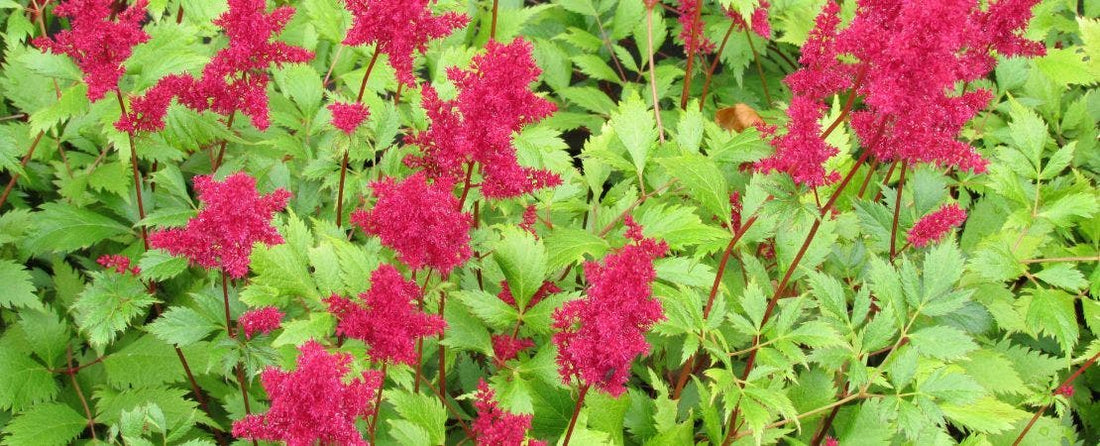Astilbe Planting and Care Guide

Astilbe Plant Care: How to Care for Astilbe with Expert Tips
Astilbe, known for its stunning plumes of colorful flowers and lush foliage, is a beloved perennial that adds elegance and charm to shade gardens. Follow these expert tips for planting and caring for astilbe.
Selecting the Perfect Spot: Astilbes thrive in partial to full shade, making them perfect for woodland gardens or areas with filtered sunlight. Choose a location with moist, well-draining soil for optimal growth. Ensure the spot receives adequate airflow to prevent fungal diseases.
Planting Astilbe
1. Choose the Right Location: Select a planting site that receives partial to full shade. Astilbes prefer moist, well-drained soil, so choose a spot with good drainage.
2. Prepare the Soil: Loosen the soil in the planting area to a depth of about 12 inches (30 cm). Mix in organic matter such as compost or peat moss to improve soil structure and fertility.
3. Planting: Carefully remove the astilbe plants from their containers and gently loosen the roots. Place each plant in a planting hole at the same depth it was growing in the container. Backfill the holes with soil and gently firm it around the roots to remove any air pockets.
4. Dig the Planting Holes: Dig Holes for the astilbe plants that are slightly larger and deeper than the root balls. Space the holes according to the mature size of the astilbes, usually about 18 to 24 inches apart.
5. Watering: Water the newly planted astilbes thoroughly to settle the soil around the roots. Keep the soil consistently moist, especially during the first growing season, to promote healthy establishment.
Astilbes Maintenance
Spring Pruning: Deadhead spent flowers to encourage continuous blooming. Cut back the old foliage to the ground in late fall or early spring to promote new growth. Remove any damaged or diseased foliage promptly to prevent the spread of diseases.
Mulching: Apply a layer of mulch around the base of astilbe plants to retain moisture and suppress weed growth. Use organic mulch like shredded bark or compost.
Fertilizing: In early spring, apply a balanced fertilizer according to package instructions to promote healthy growth and abundant flowering. Avoid over-fertilizing, as this can lead to excessive foliage growth at the expense of blooms.
Pest and Disease Control: Monitor astilbes for common pests such as slugs, snails, and spider mites. Treat pest infestations promptly using appropriate methods such as hand-picking or organic insecticides. Prevent fungal diseases by providing good air circulation and avoiding overhead watering.
By following these expert tips for planting and caring for astilbe, you can enjoy a garden filled with the graceful beauty of these enchanting perennials for a shady border or to accentuate a pond or stream, astilbes are sure to captivate with their elegant blooms and lush foliage. Visit Wayside Gardens for a wide selection of astilbe varieties and all your gardening needs.



